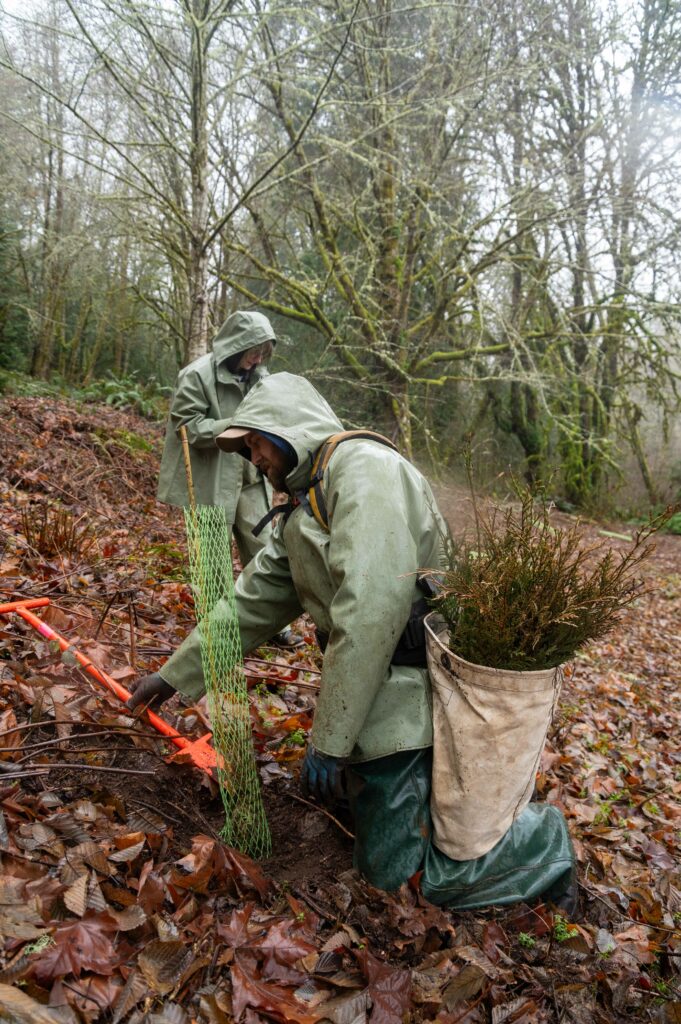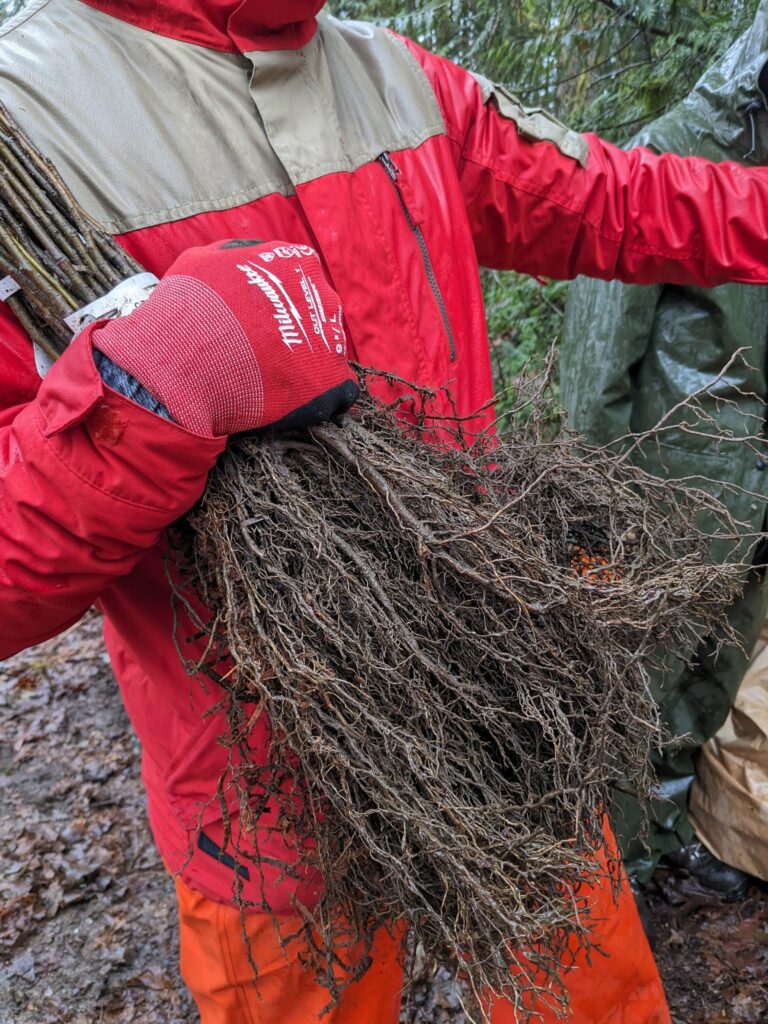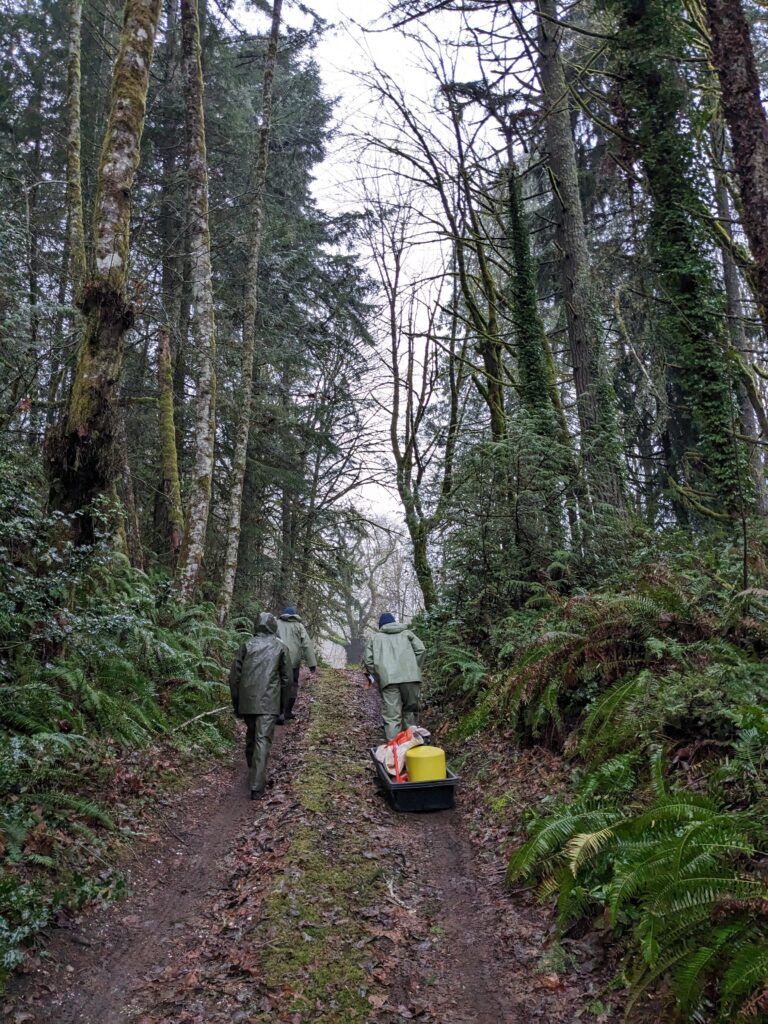GPC’s Filucy Bay Preserve has expanded in recent years through four additional land acquisitions, resulting in a combined 170-acre preserve with over 3,500 feet of protected shoreline in the northern cove of Filucy Bay. This area protects important upland forest, shoreline, and estuarine nearshore habitat for Coho salmon, cutthroat trout, ESA-listed Chinook, black bear, coyote, deer, pileated woodpecker, hooded merganser, band-tailed pigeon, and many other wildlife species.
With $25,000 in grant funding from Recreation and Conservation Office’s Estuary and Salmon Restoration Program, GPC is restoring 5.5 recently acquired acres back to native upland and shoreline forest by removing fields of blackberry, Scotch broom, and non-native grasses, The future native, diverse forest being planted adjacent to the shoreline will improve water quality and abate stormwater entering Filucy Bay.
It’s easy to put trees in the ground, right? Well, when the site started as acres of dense blackberry just a few months ago, the task felt pretty daunting. How long until the blackberry takes over again? Who will help combat re-emerging invasives? Will the trees survive? Will all this planning be worth it?
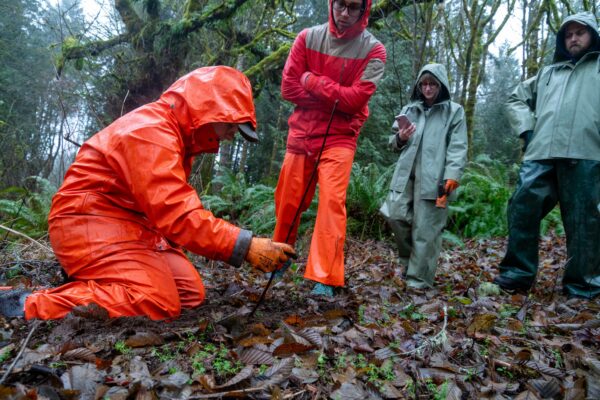
Maybe these are the normal worries that we face when planning and implementing a site restoration project. But when it comes to restoration success, adequate and long-lasting site prep paired with consistent, quality stewardship are some of the biggest hurdles we encounter. Thankfully, GPC’s amazing project partners have helped us clear hurdles from the beginning!
GPC contracted the Center for Natural Lands Management (CNLM) to treat the large swaths of blackberry and invasive species. Through two rounds of mowing and treatment, they helped significantly to prepare the site for planting. GPC anticipates bringing CNLM back out to the site for a post-planting treatment of emerging invasives.
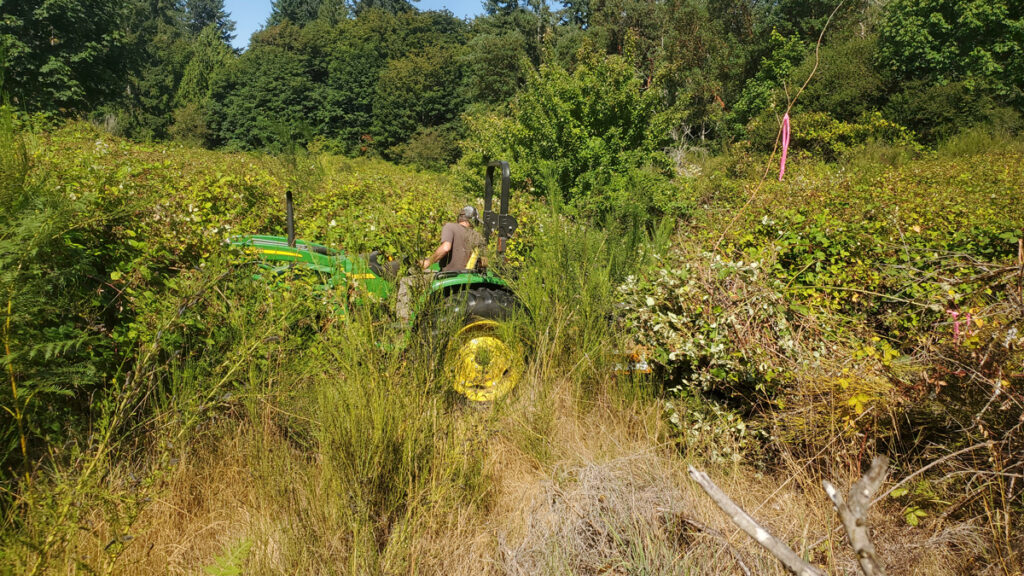
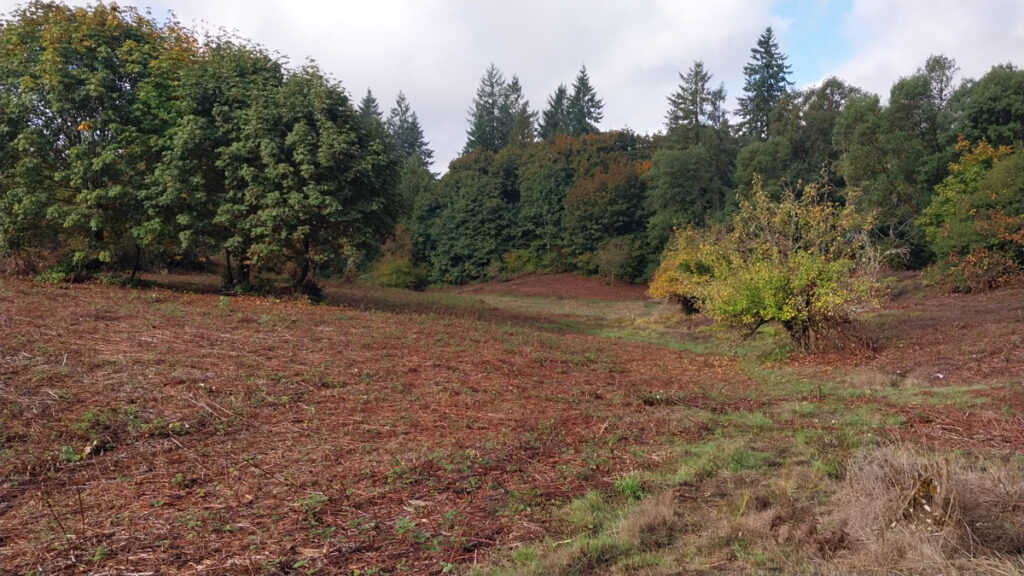
Washington Conservation Corps crew members out of Belfair spent 40 hours planting the site, digging through dead blackberry canes and maple leaves to install 2,600 native trees and shrubs. They planted seven species of native trees, from bigleaf maple and Oregon white oak to shore pine and western hemlock. To create diverse plant communities, they also added 10 species of native shrubs like bald-hip rose, osoberry, red flowering currant, and Pacific ninebark and scattered in low growing Sword ferns and kinnikinnick.
With all these baby plants in newly prepared sites, we’ll have to return frequently to see how things are going for them. The value of getting this work done early in the year is that it allows these plants to put down healthy root systems before the weather gets warm and dry this summer. Wish these new plants luck!
